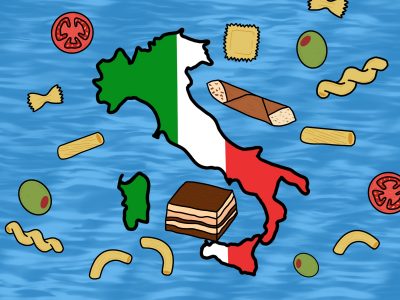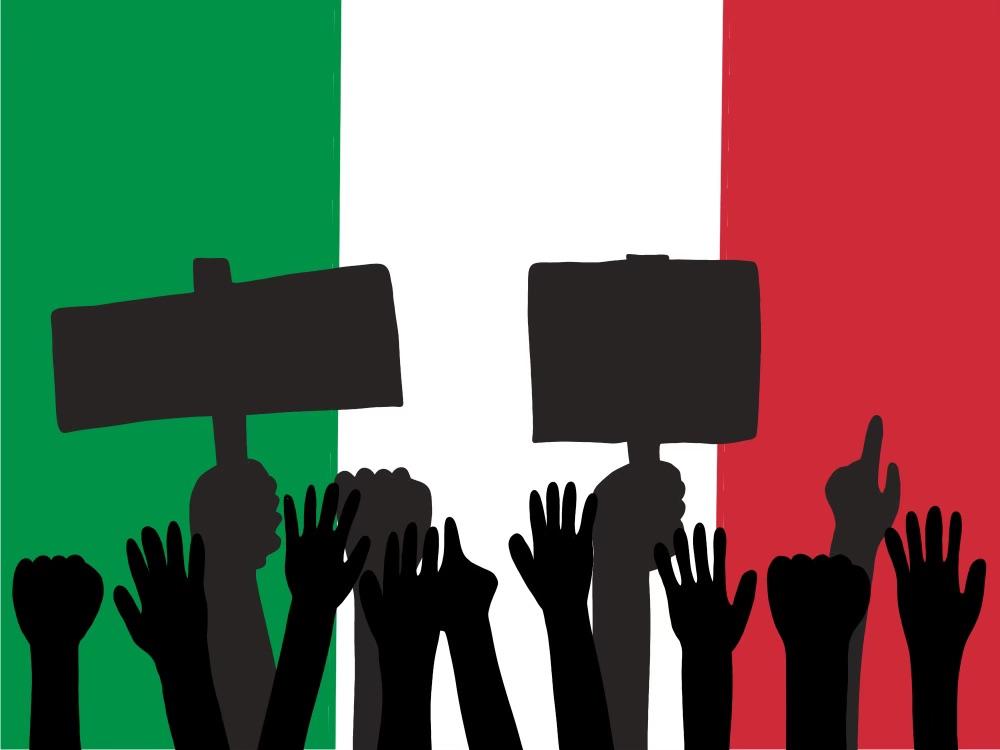If there’s one religion every single person in Italy professes, it’s the worship of food.
It is such a stereotype that all Italians talk about is food — and for good reason.

Every time I call my mom, she always starts the conversation by asking what I have had to eat, what I anticipate cooking for dinner and if I have tried any good restaurants as of late. We foster connection through sharing recipes and pictures of meals we have enjoyed.
Italians’ obsession with food is so extreme that they might even discuss it during a meal. Having a plate of pasta in front of them, people will relish in praising the carbonara from a very obscure family-owned tavern or sharing their grandmother’s uniquely good recipe for Sunday meatballs. Similarly, feuds are likely to arise during an innocent debate around where to get the best pizza in the city.
You can only imagine my shock when I had my first restaurant experience in the United States.
Not only did I find myself paying almost a Michelin star-like price for a very mediocre meal, but I also felt strongly unwelcome. The waiter did not hesitate to bring the check the moment I put my fork down — forcing me to abruptly finish my dining experience after just 40 minutes.
Afterwards I daydreamed about going to a restaurant back home — where a meal can last for hours, menus are always seasonal, you can taste the quality of the products and digestif is always on the house.
There is much debate around food culture in the U.S., and much of it originates from the idea that Americans have no unifying culinary traditions.
Although the inflow of diverse communities through migration has de facto created a semblance of American food, the latter is solely defined by its hybrid nature and openness to external influences. The diverse flavors reflected in American society coincide with its branding as a melting pot — but a distinguished food culture is more comprehensive than having an abundance of options.
Specifically, it is defined as “the practices, attitudes and beliefs, as well as the networks and institutions surrounding the production, distribution and consumption of food.”
The majority of Americans are not knowledgeable about food, and even less so about cooking due to hectic schedules that force them to associate eating with convenience and efficiency — a troublesome issue that is linked to increases in diet-related diseases. It also limits the opportunity to revive an elementary connection with the land and embrace food as a bonding value.
As Anthony Bourdain said, “Food is everything we are. It’s an extension of nationalist feeling, ethnic feeling, your personal history, your province, your region, your tribe, your grandma.”
In Italy not only do we have an absurdly rich food culture, but we consider food as inherent in our national identity.
The 20 different regions in Italy mean 20 different food traditions, all based on the idea of honoring the local ingredients, and the agriculture that provides them.
Food has always been a bridge between different age groups, and sharing a meal has become an intimate experience that nurtures human bonds.
There’s a popular Italian sentiment that reads, “you always cook thinking of someone, otherwise you’re just making food” — which perfectly exemplifies our understanding of food as not only nourishment but as a true love language.


























































































































Midge Guerrera • Feb 16, 2023 at 2:56 pm
Well said! We spend half of the time in the USA and the other half in Southern Italy. Food in Italy costs less, tastes better and is prepared with the customer in mind. When we are in New Jersey, I go through food anxiety and can’t wait to taste the fresh tastes of Compania.